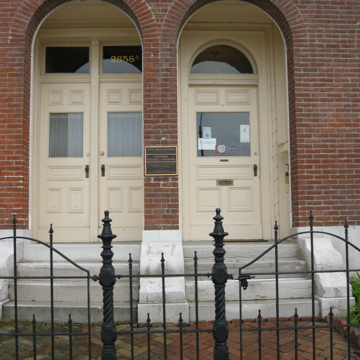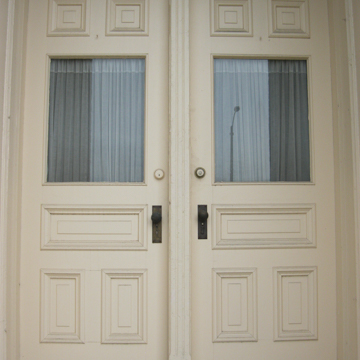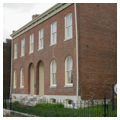This State Historic Site celebrates the great contribution to American music by Scott Joplin, "The King of Ragtime." Joplin, born in Texas in 1868, was a child prodigy who learned to play several instruments and to compose and improvise music, both classical and inspired by black musicians of the minstrel tradition. He moved to Sedalia, Missouri, where in 1896 he enrolled in the music department at George R. Smith College and produced his first well-known publication, "The Maple Leaf Rag," which became a national sheet-music best seller. With a growing national reputation, Joplin and his wife, Belle, moved to St. Louis in the spring of 1900. They rented a second-floor apartment in this modest building from 1900 to 1903, which was then in a densely populated blue-collar district of African Americans and German immigrants, with the notorious Chestnut Valley neighborhood of honky-tonks and dives nearby. The house is typical of a St. Louis two-story multifamily residence, plain with modest touches of Italianate in its arched windows and doors and low-pitched roofs with bracketed eaves. Now restored and furnished to the early-twentieth-century period, the house opened as a museum in 1991. The Rosebud Café, which was a nearby center for ragtime in Joplin's day, was reconstructed next door to the house in 2000.
You are here
Scott Joplin House State Historic Site
If SAH Archipedia has been useful to you, please consider supporting it.
SAH Archipedia tells the story of the United States through its buildings, landscapes, and cities. This freely available resource empowers the public with authoritative knowledge that deepens their understanding and appreciation of the built environment. But the Society of Architectural Historians, which created SAH Archipedia with University of Virginia Press, needs your support to maintain the high-caliber research, writing, photography, cartography, editing, design, and programming that make SAH Archipedia a trusted online resource available to all who value the history of place, heritage tourism, and learning.










